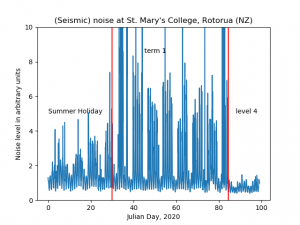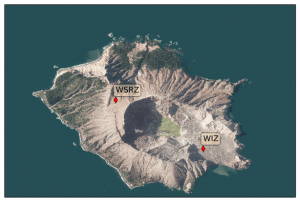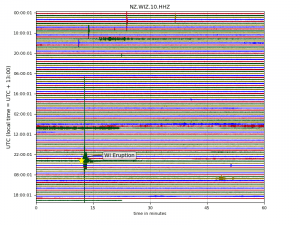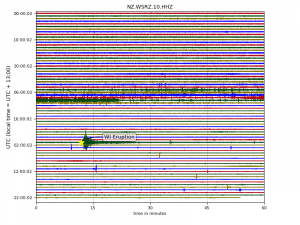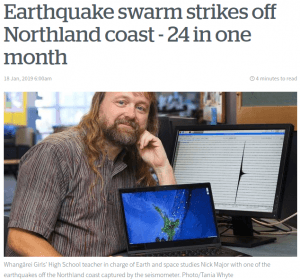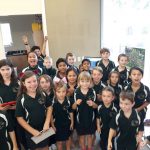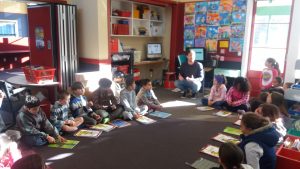On July the 29th (UTC), but the 30th of July local time in New Zealand, there was a magnitude 8.8 earthquake in North Eastern Russia. In our network we did not record clear primary or secondary seismic waves, because this earthquake is in the shadow zone for body waves for most of our network. We did record some very interesting long-period waves. In the image below from Taupo-nui-a-Tia College, we can see long-period signals from before midnight to 3am, UTC. These are the result of the Earth ringing like a bell after such a big earthquake. (After all the ringing stopped, you can see a clear recording of a small earthquake in the subducted tectonic plate 100km under Taupō,)
In addition to seismic waves, this earthquake generated a tsunami as it lifted the ocean floor, pushing water up too. You may have gotten a few alarms about this tsunami on your phone today!
The tsunami travels much slower than the seismic waves, and arrived only this morning here in Aotearoa. I have downloaded data from buoys around New Zealand that measure the water depth. These data are recorded at the blue triangles, and freely available thanks to Geonet:

In the figure below, you can see the water depth for the last 2 days. Around 2am local time this morning, you can see the tsunami waves changing the water depth up and down in periods of 30 minutes to an hour. These waves are still arriving or sloshing around at the end of this recording, 10pm local time:

Auckland is the top station, and Wellington is at the bottom. The scale on the y-axis may be hard to read, and it varies from station to station, but the tsunami waves are up to a few 10s of centimeters. Locally in New Zealand these tsunami waves could have constructively interfered to higher values.
The first station to record the tsunami on this network was RFRT on Raoul Island. If we sort the data from closest to Russia to farthest, you can see the tsunami’s propagation across the network:
 If you want to learn more about tsunamis and how they affect us out here in the South Pacific, I encourage you to visit the RCET webpage. RCET is programme to improve our response to threats from Earthquakes and Tsunami.
If you want to learn more about tsunamis and how they affect us out here in the South Pacific, I encourage you to visit the RCET webpage. RCET is programme to improve our response to threats from Earthquakes and Tsunami.




